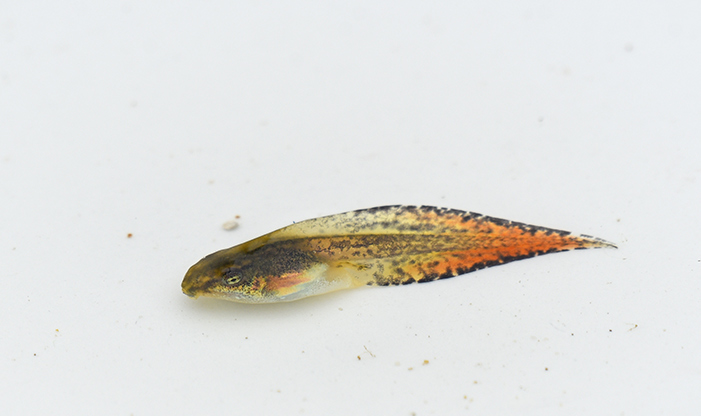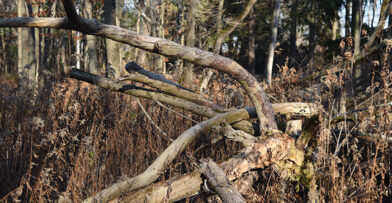The value of wetlands is often overlooked or dismissed, but they provide us with vital ecosystem services. They filter pollutants out of water before it reaches our rivers and lakes. They also capture storm water to help reduce erosion. An astounding 75% of Wisconsin wildlife depends on wetlands for at least some part of their lifecycle.
Almost all animals in Wisconsin are linked to wetlands at least by their food source. Scientists estimate that before the 1800s, Wisconsin was covered by 10 million acres of wetland. Since then, about 50% of those wetlands have been filled in or drained in order to build cities, houses, and roads. Once we understand the importance of wetlands and the threats they face, we can begin gathering data to help defend and protect them.
Ephemeral Wetlands
For the last three years Schlitz Audubon has been conducting an Ephemeral Wetland Monitoring project. Ephemeral wetlands are ponds that fill in the spring with rain water and snowmelt. Then, they dry up at least partially by the end of the year. This makes them perfect breeding habitat for salamanders and small frogs, whose larvae will be safe from predators like fish. Many invertebrates, like crayfish and aquatic insects, also depend on these habitats. This citizen science project determines which amphibian species are present at Schlitz Audubon and which of our wetlands are supporting breeding populations.
The project also aims to discover which crayfish species are on the property. Some species dig burrows that provide crucial overwintering habitat for other animals, like snakes.The surveys include other aquatic invertebrate species – they can be a food source for amphibians and turtles. Some aquatic invertebrates are indicator species for different types of wetlands and provide helpful clues about water quality.
Types of Wetland Monitoring
Last year, Ephemeral Wetland Monitoring spanned from late March to the end of May. In those two months, 15 volunteers monitored four of Schlitz Audubon’s ephemeral ponds. The wetland monitoring projects include three different survey types that citizen scientists can choose from. These include funnel trap, visual encounter, and scoop sample surveys. During funnel trap surveys, volunteers wear hip waders and set traps in the ponds to catch, record, and release breeding adult amphibians and crayfish. Visual encounter surveys also allow volunteers to enter the ponds in search of salamander and frog egg masses. Scoop sample surveys are a little more casual, but equally as important — volunteers take scoops of water from the pond and record the creatures they find.
The Results of our Project
The data collected in 2018 showed that all four ponds in the survey area contained breeding Blue-spotted Salamanders. Some other species breeding in our ponds at the Center included Green Frogs, Spring Peepers, and Eastern Gray Tree frogs.
Our conservation team uses information from wetland monitoring projects to inform them on how to proceed with pond development for our ravine stabilization project. We use the correlation between pond hydrology and biotic diversity to determine how deep we want to make the two new ponds. Understanding the needs of living things is our best hope to conserve them for the future.


